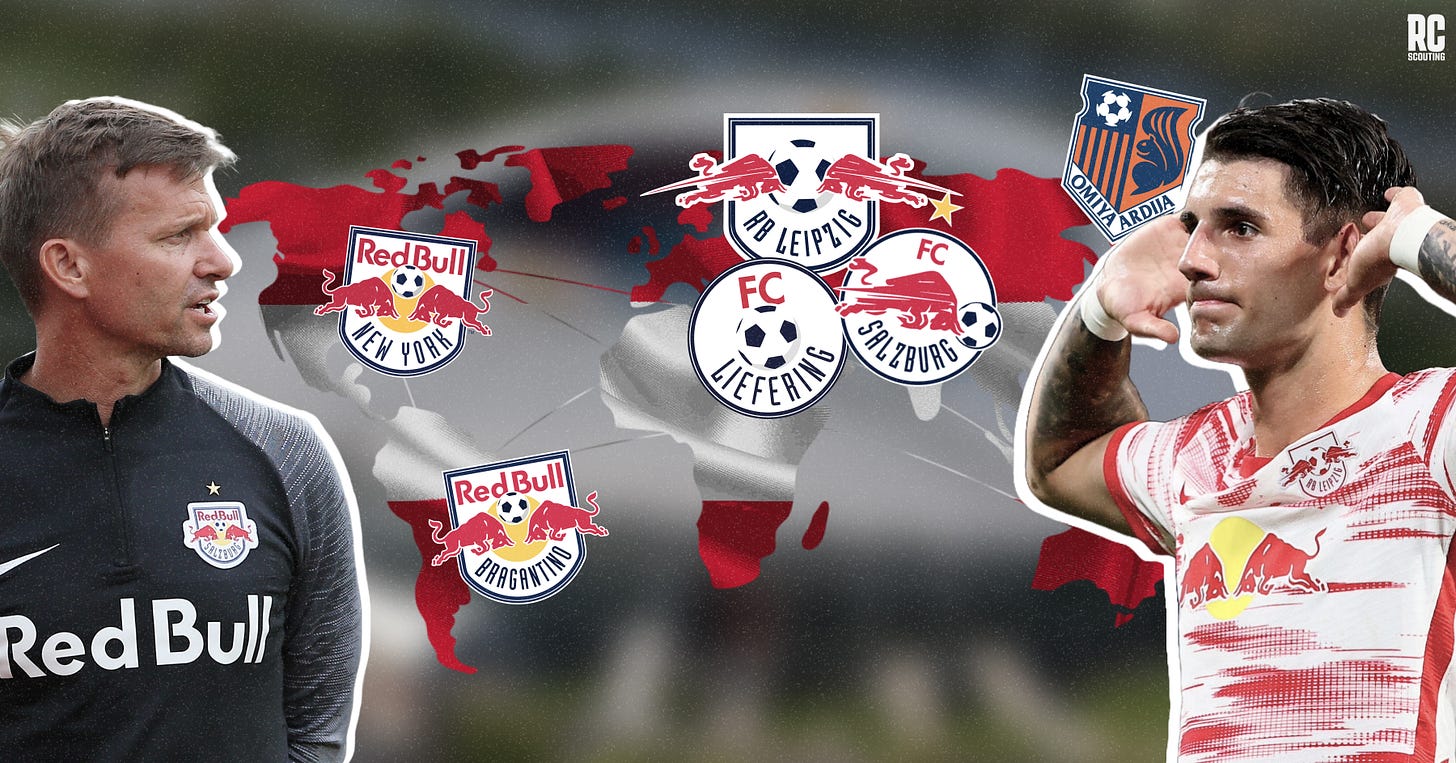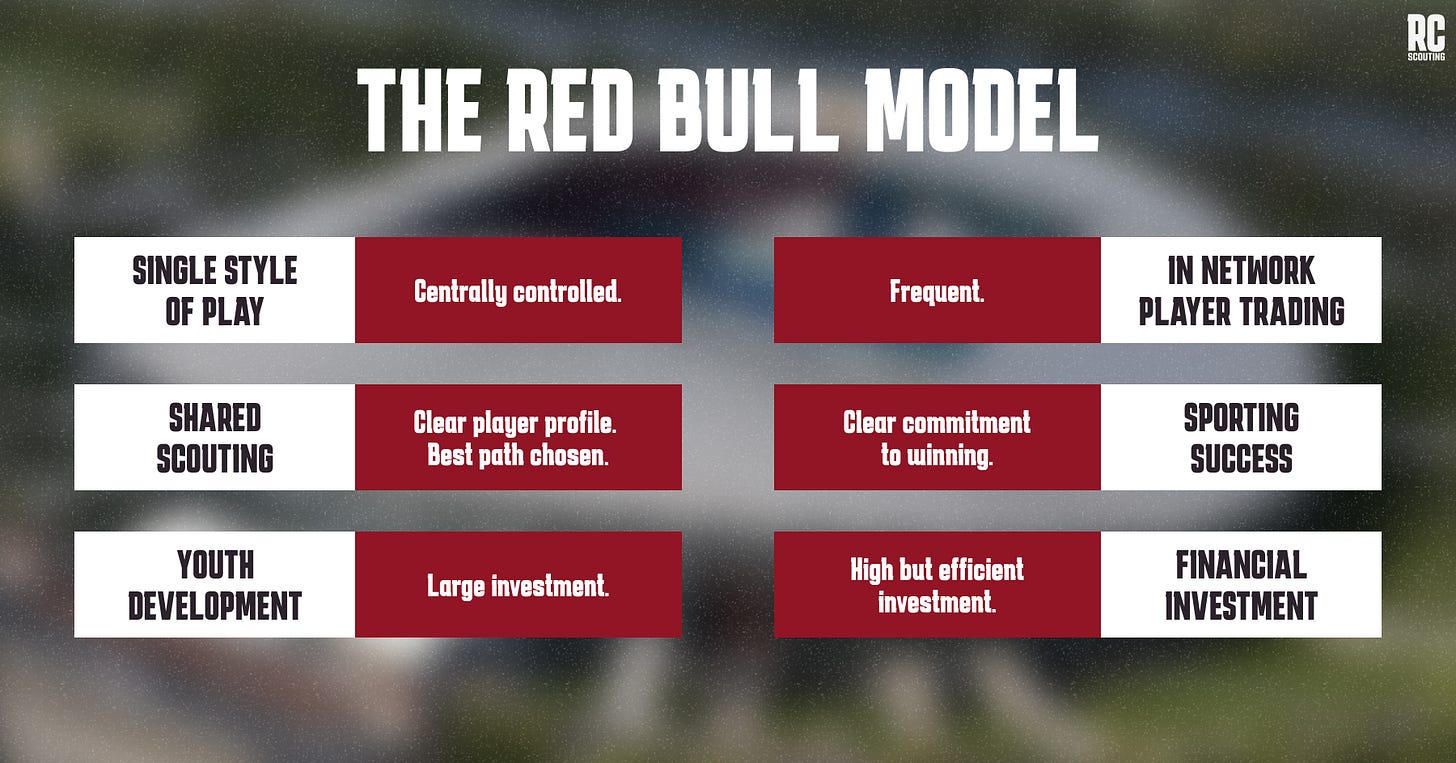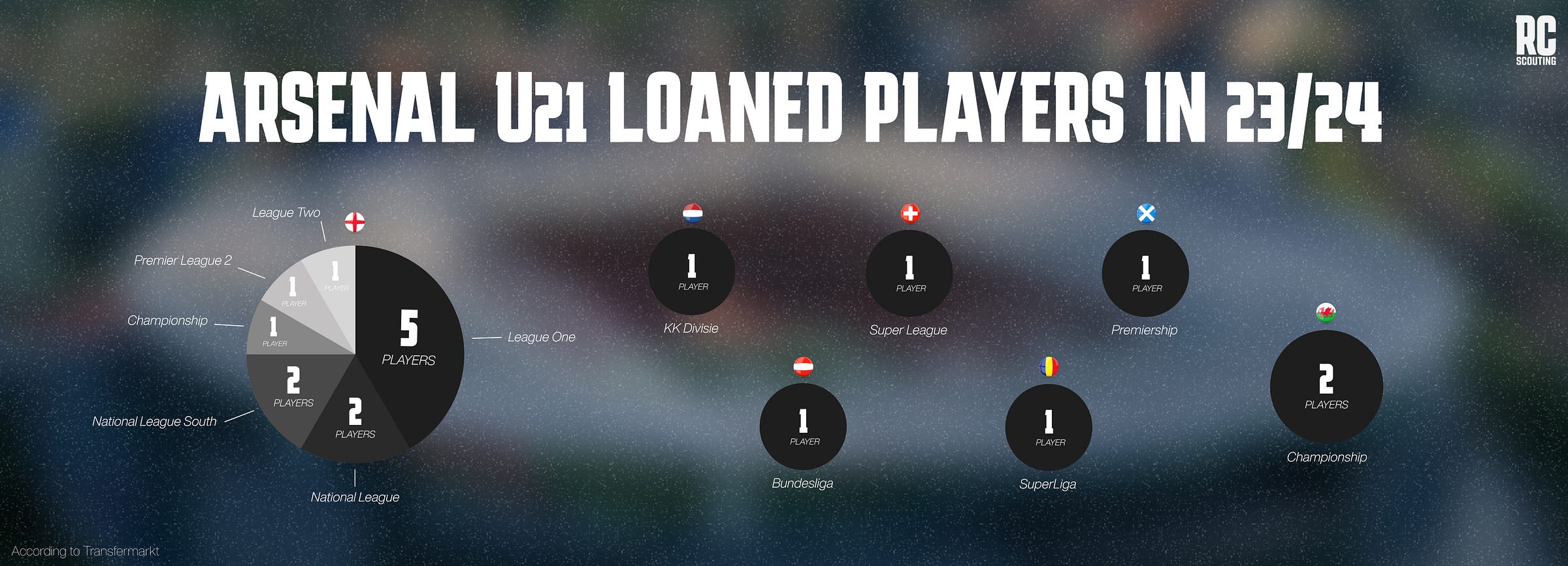What would an energy drink brand be doing in football, besides the usual marketing, you might ask? Well, Red Bull took things way beyond just slapping their logo on jerseys. They built an actual ecosystem—a clear, concise pathway for young, high-potential footballers to follow. Let’s dive into it!
The Red Bull Model: A Revolution in Youth Development
Now, I’m not here to give you a full history lesson on Red Bull. You didn’t come for that—you’re here for football. So let’s put aside the energy drinks and extreme sports for now, but it’s important to remember that Red Bull is an Austrian company that didn’t just stop at branding and marketing. They went beyond by creating something impressive and innovative in football.
Currently, Red Bull operates an ‘unofficial’ network of six football clubs spanning the globe—three in Europe, one in North America, one in South America, and a newly acquired team in Japan's third division, which is set to be promoted to J.League 2 (I do not count Leeds United in the network as it is a minority stake and it’s not in the TD strategy). This multi-club ownership model allows Red Bull to implement a cohesive strategy that enhances youth development and player progression across its clubs, while also expanding their scouting reach.
Tim Keech has crafted a model to optimize these types of multi-club ownership groups, based on six key variables: playing style, scouting, youth development, player trading within the network, sporting success and financial investment. According to him, this is how the RB model works:
The way they develop talent revolves around a unified style of play across all their clubs. Every team in the Red Bull galaxy sticks to a clear, high-intensity approach: high pressing and fast-paced transitions. In short, it’s a style built to prepare young players for the demands of elite football. By maintaining this consistent philosophy, they can easily move players between clubs without any major adjustments—and that’s exactly the point. It creates a seamless pathway for player development. So, let’s dive into how it works:
First up, we have Nicolas Seiwald—a true Red Bull “homegrown” talent. He’s been part of the Red Bull system since 2009, climbing the ranks from the academy to Liefering, Salzburg, and now playing for RB Leipzig. He’s a perfect example of how Red Bull grooms its players internally, moving them up through each level as they progress.
But Red Bull’s reach isn’t limited to local talent. Their scouting network is vast and important especially in Eastern Europe, as shown by the case of Benjamin Šeško, a Slovenian forward. Red Bull spotted him playing in Slovenia and, at just 16 years old, decided to invest €2.5 million to bring him into the system. They saw the potential early and sent him on loan to FC Liefering in Austria’s second division—a level equivalent to the French fourth tier, National 2—to toughen him up in a senior league. After two seasons there, he was ready for the next step: FC Salzburg in Austria’s top division. From there, he continued his upward trajectory and is now in the Bundesliga with RB Leipzig, the pinnacle of the Red Bull football pyramid. According to Transfermarkt, his market value now sits at a cool €50 million, so that initial €2.5 million investment at only 16 years old paid off handsomely.
Of course, not every player follows the exact same path as Šeško or Seiwald. Take Naby Keïta, for example. His talent level was such that he skipped the loan spell at Liefering entirely. Instead, he transitioned straight from FC Istres into Salzburg, before making his leap to Leipzig. According to Transfermarkt, Red Bull’s investment in Naby Keïta totaled just €1.5 million, yet four seasons later they sold him to Liverpool for a fee of €60 million.
That being said, not every player in the Red Bull galaxy ends up reaching the top of the pyramid. However, the fact that the majority of these young players gain valuable senior experience with FC Liefering in Austria’s second division means their value still increases, even if their journey takes them elsewhere.
But why not just loan them to other clubs?
Honestly, this is something I wondered too. I mean, look at top European clubs like Arsenal. They loan their academy players to clubs in the Championship or League One to help them transition from the academy setup to the senior game. So, why go through the hassle and expense of actually buying clubs?
I had the chance to chat about this with Frank Dunne, a freelance sports journalist and editor who's spent 25 years covering media rights in sports. He's also written a report on multi-club ownership, so huge thanks to him for letting me pick his brain. And really, the answer is pretty straightforward: it all comes down to CONTROL. When you partner with another club, sure, you can collaborate and send a few players on loan. But at the end of the day, that club calls the shots. For example, you might find what seems like the perfect team for your academy player to develop, expecting him to rack up valuable minutes. But if the coaching staff decides he’s not ready, those minutes might not come. They’re always going to prioritize their own interests, which may not align with yours. That’s the big advantage Red Bull has—they avoid this by owning the clubs and having centralized control.
Across all clubs in the group, the same development strategy is applied, so there’s no second-guessing how much a player will play or how they’ll fit into the system. That’s what makes the success of this model, having a clear strategy that is centrally controlled and applied across all clubs.
What about the other continents ?
When we look at the other Red Bull clubs, like the New York Red Bulls and Red Bull Bragantino, very few players have actually made the jump to Europe through the system. The standout—and pretty much only—example is Tyler Adams. He worked his way up from the NYRB Academy to the first team, and by January 2019, he was deemed ready for Europe, moving straight to RB Leipzig for €2.63 million. Fast forward four seasons, and Adams was sold to Leeds United for €17 million.
The initial purchase of the New York franchise had a lot to do with marketing. The goal was to attach big names like Thierry Henry to the Red Bull brand and strengthen their image in the region. But they also saw potential in U.S. football as the next big thing—they weren’t wrong. Red Bull bought the New York franchise back in 2006 for somewhere between €25 and €30 million, and now, 18 years later, it's valued at €510 million, according to Forbes.
However from a talent development point of view, the lack of player movement from NYRB and RB Bragantino to Europe hasn't gone unnoticed. Oliver Mintzlaff, CEO of Corporate Projects and Investments at Red Bull, has acknowledged this frustration. When Kicker pointed out that, apart from Tyler Adams, the benefits of the clubs in Brazil and the USA were not evident, he didn’t hold back. He said, "Absolutely right […] MLS is developing, but it’s developing far too slowly and is still far away from the standard we would imagine for a country like the USA." Despite the slow progress, Mintzlaff remains optimistic, especially with Red Bull having poured €200 million into a state-of-the-art academy set to open in two years.
As for their latest venture in Japan, Mintzlaff emphasized that their goal is clear: get the club into J1 League and follow the path that led RB Leipzig to success. By that, they aim to apply their expertise in talent development, ability to evaluate players and understanding the local market to produce players fit for Europe. The mission isn’t a secret—they want to replicate their European success, and Japan is the next frontier, so keep an eye on Omiya Ardija—don’t be surprised if the next big names out of Japan come from this club in a few years!
Red Bull gives you wings, yes indeed.
By now, it’s clear that Red Bull’s approach to youth development does exactly what their slogan promises: it gives players wings. But instead of a quick boost, it’s a carefully crafted process that guides talent step by step, preparing them for the elite level. The real magic of their model is that it’s not left to chance. Every club, every academy, and every coach in their network shares the same philosophy. This creates an environment where young players are set up for success from day one.
When it comes to scouting, Red Bull’s reach is impressive. They’ve built a global network, with eyes on emerging talents in everywhere. Whether it’s plucking Benjamin Šeško from Slovenia or nurturing future stars in Japan, they know how to spot and develop talent early. Chelsea for example, has taken a different and lets’ say, more agressive approach. They’re casting a wide net, spending big to secure the best young players, with deals like Kendry Páez (17 years old) for €18 million and Estevão (17 years old) for €34 million secured for the 25/26 season.
It’s a bold strategy, and Chelsea will soon have an enormous pool of talent. But what will they do with all those players? That’s where Red Bull stands apart. Chelsea and RC Strasbourg share the same owner through BlueCo, but strict FIFA rules limit the number of loans, only three players per season from Chelsea to Strasbourg, and none (!) if both clubs qualify for Europe this season. This constraint forces Chelsea into tough decisions about where to place their enormous pool of talent. Red Bull, meanwhile, faces no such hurdles. Their system allows for seamless movement between clubs, offering young players a clear path from the academy all the way to the first team without loan complications.
As seen previously with Tim Keech’s model, financially, when Red Bull goes in, they go all in. They’re not just picking up clubs and hoping for the best. They pour in the resources, whether it’s through the best academies, big-name transfers, or global scouting networks. Just look at the €200 million New York academy project, or their plans for Omiya Ardija. It’s not just about developing players—it’s about doing it the Red Bull way, with precision, strategy, and a clear vision of success.
In the end, Red Bull really does give you wings—only, in this case, it’s not just about energy; it’s about flying to the top of European football, and they’ve got the talent pipeline to prove it.
Thank you for reading! I hope you enjoyed diving into Red Bull’s fascinating strategy as much as I did writing about it ;)












